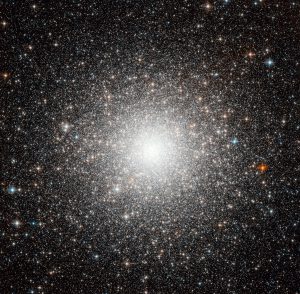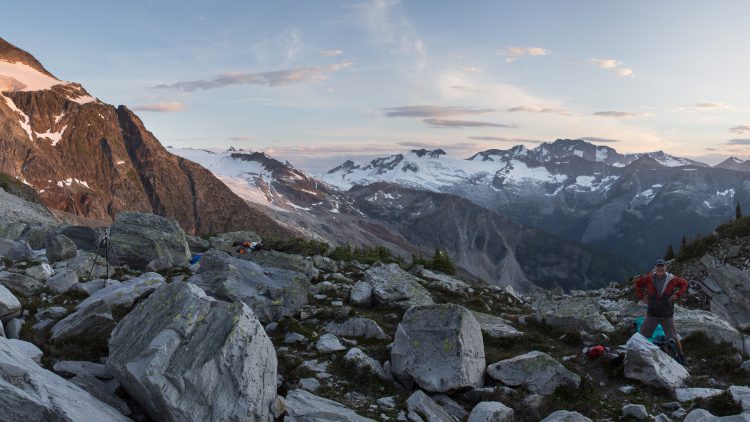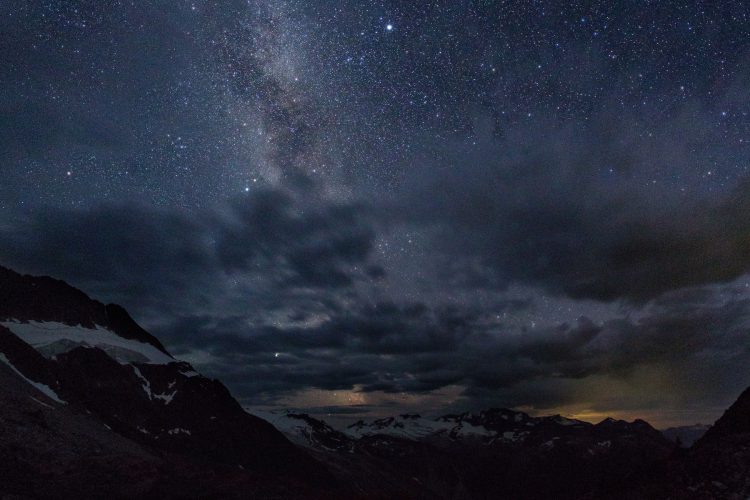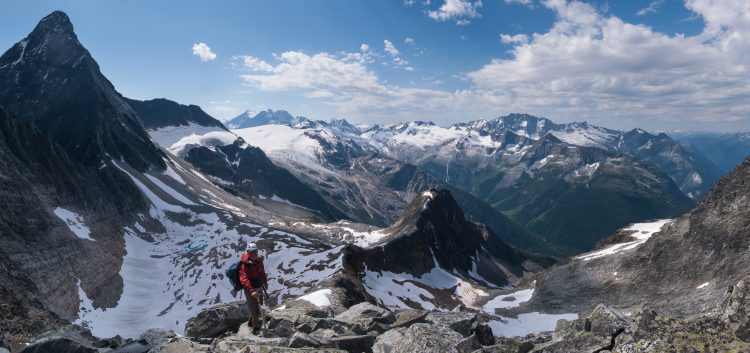I’ve always loved the high alpine environment for its primal beauty and grand perspectives, and I’ve always loved astronomy for the same reasons; other worldly beauty and a view of the overwhelming vastness of the universe. Both are infinitely beautiful, from minute details to vast expanses, and hammer home the reality of how insignificant and fragile we are, and yet how special life is. And both are difficult; getting into the alpine requires a lot of sweat-effort and years of training, and capturing the night sky requires patience, specialized equipment, and lots of practice.
But the best stuff in life is never easy!
In the alpine world, one mistake or random rock fall can extinguish your life in an instant, a reality which brings life into sharp focus makes it extra vibrant. And in a galaxy of 100s of billions of stars and planets, of incomprehensible heat and cold and distance and energy, the only home we have is a sacred blue ball protected by an eggshell-thin atmosphere.
When you only have one of something it is absolutely precious.
Camping season is short in Canada, and for much of it the sky never really gets fully dark, so the prime season for night photography is only two months long, from mid August until mid October. Within this small window, the combination of clear mountain skies, a dark moon, and the ability to take a few days off is a rare event, so when a few days of brilliant clear weather is forecast for much of British Columbia, I make plans with my friend Marc from Penticton to meet at Rogers Pass in Glacier National Park for a few days of night photography and mountain wandering.
When climbing mountains the view improves with every step upwards, and similarly the night sky view improves the higher you get because the atmosphere is full of dust, water vapour, glowing molecules and turbulent air that disturbs the scene. Of course getting as far from the lights of civilization as possible is key to really seeing the stars, and Glacier National Park is one of the more-easily accessed dark sky locations in British Columbia.
The ongoing Covid19 crisis has resulted in reduced capacity and limited camping options in parks, but we are able to get a spot at the Mt Sir Donald bivouac site, which is normally only used by climbers attempting the classic NW ridge route of Sir Donald. Marc and I meet at the parking lot in the afternoon under a brilliant blue sky and are very excited about getting up into the alpine in perfect weather!
The day is very hot, around 30C, and hiking up south-facing glacial moraines in that temperature and sun is exhausting. Finding a stream to cool off in gives us a much-needed break, and after a few hours of hot slogging we reach the bivy site at around 7:30 and find a couple flat areas for our sleeping bags on a rocky knob with great views to the south.
We had opted to take bivouac bags instead of a tent for few reasons: save weight, sleep under the stars, and have more flexibility in picking a camp location, as you need less than two square meters of flat ground for a bivy bag. The main disadvantage of a bivy bag is the lack of protection from the rain, but that wasn’t a big concern with the perfect forecast. Fingers crossed…
Soon after dinner, clouds start to form on the southern horizon, and after all the work of carrying 15lbs of camera gear up 1000m of steep rocky trail to photograph the stars from this pristine dark sky location, it was pretty disappointing to see this change in the weather! But watching the sunset from such a high point soon put an end to that disappointment and seeing the brilliant stars appear through cloud gaps gave us hope that the sky would clear. Night photography in the mountains is difficult because the weather changes rapidly, and difficult things don’t always work out as planned.
As the sky grew darker, Marc and I chatted about life, geeked out over science, recalled many previous mountain adventures, soaked up this incredible location, and excitedly pointed out various groups of stars when they appeared between the rapidly moving cloud bands. The southern Milky Way was so bright that it back-lit the clouds that were streaming in from the SW; what a spectacle!
In addition to a big SLR camera, a few lenses and a tripod, lot of the weight in my pack was devoted to carrying a star-tracking camera mount and related accessories, and after lugging all that gear up here I am pretty determined to wait out the clouds. The star tracker needs to be aligned north and then rotates to counteract the spinning Earth, which allows for long exposures with pin-point stars, but it requires a clear view of Polaris (the north star) for alignment. So despite being exhausted from the hike in, we persevere, waiting and watching the cloud bands flow in from the south, and eventually our patience is rewarded with a couple hours of mostly clear skies and stunning views of the Milky Way arching from south-west, straight overhead, and disappearing behind the Sir Donald / Uto col to the north east.
In this full-sky view, Sagittarius is partially obscured by the clouds on the southern horizon, the summer cross of Cygnus is directly over head, and rising in the NE sky above the Uto / Sir Donald col are the prominent constellations of Cassiopeia and Perseus, and the Andromeda galaxy. Occasionally a meteor would streak across the sky, from NE to SW, one of the last of the Perseus meteor shower that peaked last week.
This zoomable image spans approximately 80×90 degrees, with the constellation of Cygnus almost directly overhead and Saturn almost due south. The image is a mosaic of 18 frames, each one a 60-second exposure with a 50mm lens.

The core of the Trifid Nebula, visible to the right of the clouds above Sagittarius. Image credit: Robert Gendler.

Messier 54 globular cluster in Sagittarius. Image credit: Hubble Space Telescope
Why do we pour so much time and effort into certain activities? I can’t answer that, but for me, it’s a irresistible challenge to create an image which attempts to capture the reality of being high on a peak, surrounded by ranges of immense mountains, sitting on a planet that’s much bigger than you can explore in a lifetime, yet being completely dwarfed by the infinity of the universe above.
In the south-west, right of Jupiter, we are looking towards the very center of our galaxy, the Milky Way. Among the interstellar riches visible in this region are dozens of star clusters, numerous nebula, exploded stars, and vast dark clouds of dust and gas, all of which lie within the disk of the Milky Way. Also captured in this image are dozens of globular clusters, ancient clumps containing around 100,000 stars, up to 13 billion years old, that orbit our galaxy.

Supernova remnant M27, Dumbbell nebula, visible just above the constellation Sagitta. Image credit: Bill Synder

Messier 25 star cluster in Sagittarius. Image credit: Jean-Charles Cuillandre (CFHT) & Giovanni Anselmi (Coelum Astronomia), Hawaiian Starlight
A few years ago, on a different part of the Earth with more cooperative weather, I captured this same view of our galaxy and explored its stellar wonders in the blog Camping Under a Billion Stars. I won’t go into all that again, but put it this way: understanding what’s visible in this part of the sky has driven much of astronomy and physics research for centuries, since well before Charles Messier published his famous catalog of nebulae and star clusters in 1771.
Windows eventually close, and by 2:00am heavy clouds are again moving in from the south and the sky overhead and to the north is becoming hazy; star gazing is over and it’s time to crawl into the bags and get some sleep.
We are a bit groggy in the morning, and it’s a struggle to sleep in as the mosquitoes are buzzing around our exposed faces by first light. The sky is mostly overcast, but very fortunately no rain has fallen, which would have made a short night even shorter! During a very relaxed breakfast the sky opens up a bit, but then a rain storm moves in from the west and passes to the north. The sky clears a bit and we decide to hike up the ridge connecting Uto and Eagle peaks, to get a higher view and possibly bag a summit, but the main goal of the trip was night photography, not summits, so we are both in a very relaxed mood as we pack up, stow our camp gear and then start picking our way up through the boulder field towards the ridge.
Scrambling up the ridge is straightforward and fun, maneuvering over and through the jumbled blocks of igneous and metamorphic rocks that make up the range. The sharp edged pyramid of Sir Donald towers above us to the SE, and we are glad, for both ourselves and for the parties of climbers on the NW ridge, that the rain storms have not hit this area yet.
We don’t manage to get a summit but do get to the top of a bump on the ridge between Uto and Eagle peaks, a great spot to have lunch and gaze in awe at the peaks and glaciers all around. On the east side of our ridge is a dramatic drop of a few 100m to the Avalanche glacier, flowing into the Beaver River valley below. To the north and east, across the Columbia Valley, we are able to identify the big peaks of the Rockies including Mt. Columbia, 100km away, Mt. Clemenceau and the Lyell group. The grand perspective!
After a relaxed lunch on the ridge, we decide to head back down before a storm hits, and so start descending the 1500m from this glorious alpine world, first down to camp, pick up gear, then down the moraine and into the rich forest and back to the car. Thanks, Marc, for a fantastic couple of days in the alpine!
To clear dark skies, wilderness and grand vistas.
– Darren Foltinek, August 2020











